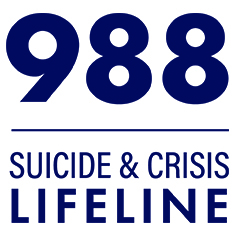Media Guidelines and People Bereaved by Suicide
December 19, 2013
A study from the UK revealed some tension and a difference in emphasis between the concerns of people bereaved by suicide loss (notably that the deaths be reported accurately and sympathetically) and the typical focus of guidelines for reporting on suicide (which are focused on preventing “copycat” suicides).
This study compared the recommendations and concerns of four guidance documents for reporting on suicide and the results of qualitative interviews with people bereaved by suicide loss. The authors reported that “just under half of our interview sample said little or nothing about the media.” However, of those who did speak about the media, their analysis revealed some areas of tension between the media guidelines and the concerns of suicide survivors.
The major complaint about media coverage voiced in the survivor interviews was inaccuracy (rather than including too much detail about the event). Even small mistakes (such as the age of the deceased) seemed to create an emotional impact. All four guidance documents cautioned against including explicit details about the death (as it is thought that including such detail could contribute to suicide risk among vulnerable people). Only one guidance document mentioned the importance of accuracy to the bereaved. The authors suggested that the committees creating these guidelines may have assumed that all reporters are concerned with accuracy and thus guidelines on this issue were unnecessary.
A second complaint by the bereaved was being “harassed” or “hounded” by reporters. Three of the guidelines note that it is important to respect the privacy of, and show consideration to, the bereaved.
The authors noted other points of tension between some of the guidance documents and the situations reporters face while doing their job. For example, three of the four guidance documents suggest that the media not use the phrase “committed suicide.” However, many of the suicide survivors interviewed for this study used this expression. The authors pointed out that “reporters may want to reflect the language used by the person they have interviewed, and indeed face criticism from families if they do not.” They also suggest that families be guided to intermediates, such as police family liaison officers, who can help them prepare a press statement.
Chapple, A., Ziebland, S., Simkin, S., & Hawton, K. (2013). How people bereaved by suicide perceive newspaper reporting: Qualitative study. British Journal of Psychiatry, 203(228-232).
SPRC Commentary
All of the media reporting guidelines mentioned in this article are available in the SPRC Library. These include:
· Media Guidelines for Reporting Suicide and Self-Harm (Samaritans)
· Recommendations for Reporting on Suicide (American Association of Suiciology, American Foundation for Suicide Prevention, Annenberg Public Policy Center, and others)
· Preventing Suicide: A Resource for Media Professionals (WHO)
· Editors’ Code of Practice (Press Complaints Commission)
